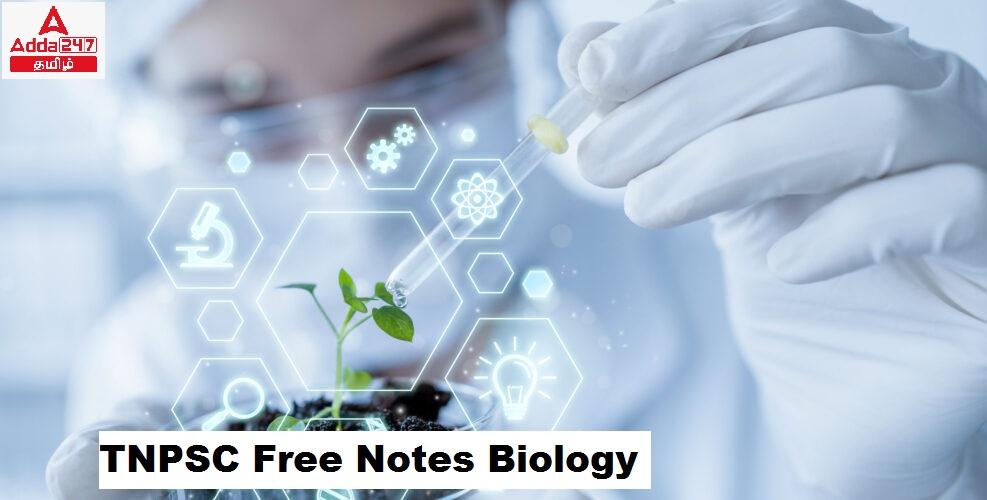இந்தக் கட்டுரையில், TNPSC குரூப் 1, குரூப் 2, குரூப் 2A, குரூப் 4 மாநிலப் போட்டித் தேர்வுகளான TNUSRB, TRB, TET, TNEB போன்றவற்றுக்கான முறைகள் இலவசக் குறிப்புகளைப் பெறுவீர்கள்.தேர்வுக்கு தயாராவோர் இங்குள்ள பாடக்குறிப்புகளை படித்து பயன்பெற வாழ்த்துகிறோம்.
Nutrition and Health &Hygiene
Nutrition:
Classification of Nutrition:
• Food is the basic necessity of life.
• Food is defined as any substance of either plant or animal origin consumed to
provide nutritional support for an organism.
• It contains essential nutrients that provide energy, helps in normal growth and
development, repair the worn out tissues and protect the body from diseases
• Nutrients are classified into the following major groups as given below.
▪ Carbohydrates
▪ Proteins
▪ Fats
▪ Vitamins
▪ Minerals
Carbohydrates
• Carbohydrates are organic compounds composed of carbon, hydrogen and
oxygen.
• Carbohydrate is an essential nutrient which provides the chief source of energy to
the body. Glucose, sucrose, lactose, starch, cellulose are examples for
carbohydrates.
• Carbohydrates are classified as monosaccharide (Glucose), disaccharide
(Sucrose) and polysaccharide (Cellulose).
• The classification is based on the number of sugar molecules present in each
group.
Proteins
• Proteins are the essential nutrients and also the building blocks of the body.
• They are essential for growth and repair of body cells and tissues.
• Proteins are made of amino acids.
• Essential amino acids are those that cannot be biosynthesized by the body and
must be obtained from the diet.
• The nine essential amino acids are phenylalanine, valine, threonine, tryptophan,
methionine, leucine, isoleucine, lysine and histidine.
Fats
• Fat in the diet provides energy.
• They maintain cell structures and are involved in metabolic functions.
• Essential fatty acids cannot be synthesized in the body and are provided through
diet.
• Essential fatty acids required in human nutrition are omega fatty acids.
Vitamins
• Vitamins are the vital nutrients, required in minute quantities to perform
specific physiological and biochemical functions.
Minerals
• Minerals are inorganic substances required as an essential nutrient by organisms
to perform various biological functions necessary for life.
• They are the constituents of teeth, bones, tissues, blood, muscle and nerve cells.
• The macro minerals required by the human body are calcium, phosphorus,
potassium, sodium and magnesium.
• The micro minerals required by the human body also called trace elements are
sulfur, iron, chlorine, cobalt, copper, zinc, manganese, molybdenum, iodine and
selenium.
Nutrition Disorders
• Absence of certain nutrients in our daily diet over a long period of time leads to
deficiency diseases. This condition is referred as Malnutrition.
• Deficiency of proteins and energy leads to severe conditions like: Kwashiorkar
and Marasmus.
Kwashiorkar:
• It is a condition of severe protein deficiency.
• It affects children between 1-5 years of age, whose diet mainly consists of
• Carbohydrates but lack in proteins.
Marasmus:
It usually affects infants below the age of one year when the diet is poor in
Carbohydrates, fats and proteins.
Goiter:
A goiter commonly develops as a result of iodine deficiency or inflammation of the
thyroid gland.
Vitaminosis:
• An excess of vitamins called Hypervitaminosis.
• Is a condition of abnormally high level storage of vitamins in body.
Methods of Food Preservation The various method of food preservation are
explained below.
Drying:
Drying is the process of preservation of food by removal of water /moisture
content in the food.
Smoking:
In this process, food products like meat and fish are exposed to smoke.
Radiation:
Food irradiation is the process of exposing food to optimum levels of ionizing
radiations like x-rays, gamma rays or UV rays to kill harmful bacteria and pests.
Cold storage:
It is a process of storing the perishable foods such as vegetables, fruits and fruit
products, milk and milk products etc. at low temperature
Freezing:
• Freezing is one of the widely used methods of food preservation.
• This process involves storing the food below zero degree Celsius at which
microorganisms cannot grow.
Pasteurization:
• Pasteurization is a process of heat treatment of liquid food products.
• This process also involves boiling of milk to a temperature of 63°C for about 30
minutes and suddenly cooling to destroy the microbes present in the milk
**************************************************************************
| Adda247 TamilNadu Home page | Click here |
| Official Website=Adda247 | Click here |









